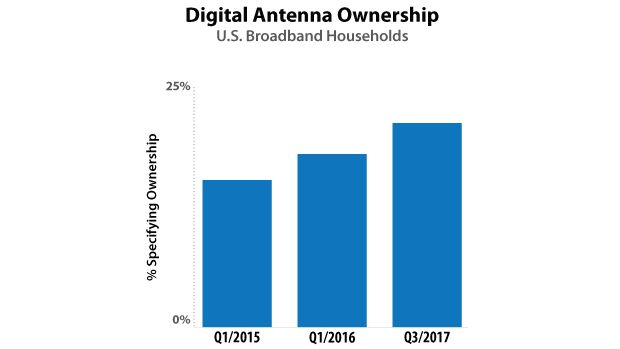Report: One in Five Homes Use Digital Antennas for Live TV
DALLAS—With the decrease of pay-TV subscriptions and the increase in OTT video subscriptions, people are able to find different ways to get the content they want, and one way appears to be digital antennas. According to a report from Parks Associates, “360 View: Access and Entertainment Services in U.S. Broadband Households,” by the end of 2017, 20 percent of U.S. broadband households used digital antennas, up 16 percent from 2015.
“Increasingly, consumers are cobbling together their own bundles of content sources,” said Brett Sappington, senior director of research at Park Associates. “Digital antennas are experiencing a resurgence as consumers consider over-the-air TV and OTT video services as alternatives to pay TV. The percentage of ‘Never’ households (households that have never subscribed to pay-TV services) has held steady and the percentage of households actually cutting the cord has increased between 2015 and 2017. Antennas are affordable source for local channels to these households.”

[Making Over-the-Air TV Cool Again]
Parks Associates findings show that the high cost and a low price/value perception are key reasons for people canceling their pay-TV services and bundle shavings, with more than 50 percent of homes that have cut the cable citing the service is “not worth the cost.”
There are opportunities, per Parks Associates, to improve this perception. The report found that 46 percent of pay-TV subscribers are aware they have access to on-demand content. Many also indicate they want to purchase online video services through their pay-TV provider and to access through their channel guide.
Additional findings from the report showed that 63 percent of subscribers who can’t current restart programs from the beginning find the feature appealing; 17 percent of consumers who cancel their pay-TV service would have stayed with their provider if there were no monthly fees for set-top boxes; average fees for standalone broadband have increased nearly 25 percent since 2010; and 20 percent of Wi-Fi homes experience problems with coverage in their home.
See the full report here.
The professional video industry's #1 source for news, trends and product and tech information. Sign up below.
